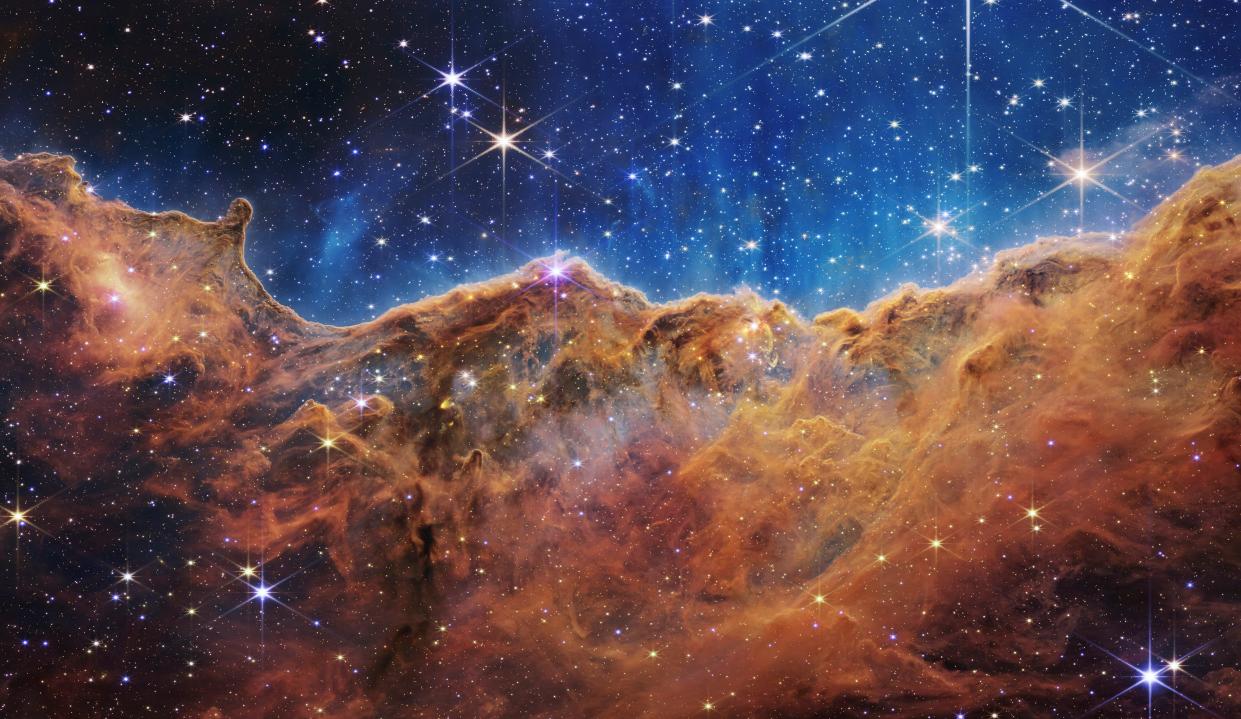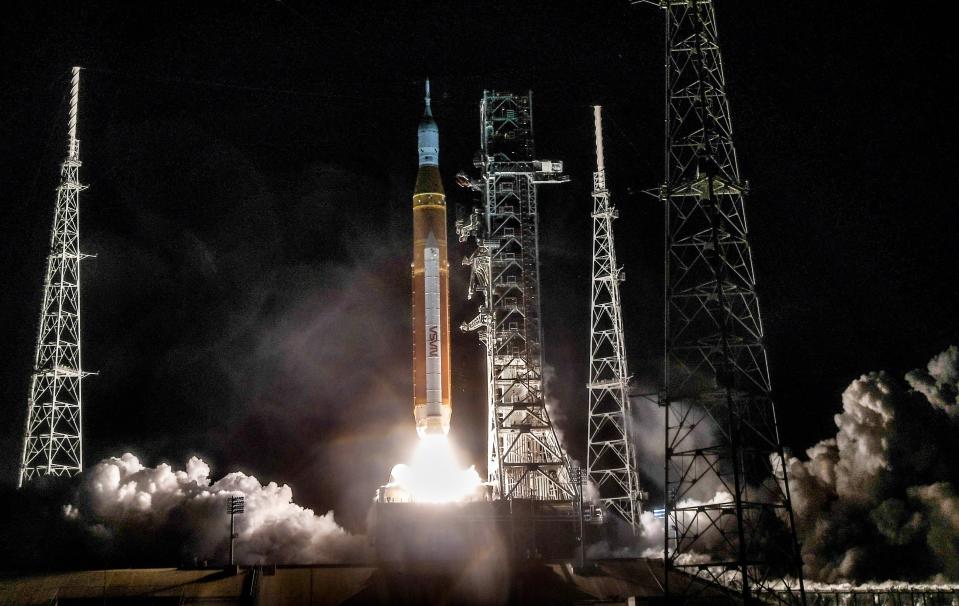The Top 5 celestial happenings of 2022 | The Sky Guy

2022 was an exciting year for astronomy and space science.
1. James Webb Space Telescope
Topping this year’s best was the James Webb Space Telescope. The telescope was launched in December 2021 and NASA released its first five images on July 12, 2022. Check out some images: nasa.gov.
2. Black hole
On May 12 scientists from the Event Horizon Telescope (EHT) released an image of the black hole at the center of our galaxy, the Milky Way. The EHT is a worldwide network of radio telescopes that use radio waves instead of light to “see” the universe. Radio waves pass through the dust and gas that blocks visible light.
3. Total lunar eclipse
Then there was a total lunar eclipse on May 15-16.
4. DART vs. asteroid
On September 26th NASA’s Double Asteroid Redirection Test (DART) smashed into the asteroid Dimorphos. DART was the first planetary defense demonstration to see if we could successfully change the orbit of an incoming object. NASA had hoped to change the orbital period of Dimorphos by at least 73 seconds. The initial data showed that DART passed this minimum by more than 25 times. It changed the orbit by 32 minutes.

5. Artemis I launch
After being delayed twice, the Artemis I mission finally launched from Cape Canaveral Nov. 16 taking us back to the Moon and beyond. Atop of the Space Launch System was the Orion spacecraft designed to carry humans to the Moon and then to Mars. After circling the Moon, the space crafted successfully splashed down Dec. 11.
January skies
Morning sky: Mercury makes its appearance mid-month low in the east. Watch the Moon pass a couple of bright stars and planets, see below for dates.
Evening sky: Four planets can be found in the evening sky. Venus enters low in the west. Saturn can be found about a quarter of the way up in the west. Watch as Venus slowly catches up with Saturn. Next, you’ll find brilliant Jupiter about halfway up at sunset. Mars is almost straight up at sunset. Watch the Moon pass a couple of bright stars and planets, see below for dates.
3rd: Moon near Mars in the evening sky.
6th: Full Moon forms a triangle with bright stars Castor and Pollux in Gemini in the evening sky.
7th: Tallahassee Astronomical Society’s free planetarium show, “January Skies over Tallahassee,” at the Downtown Digital Dome Theatre and Planetarium at the Challenger Learning Center (not recommended for children under 5). Doors close at 10 a.m. sharp. Masks highly recommended.
10th: Moon near bright star Regulus in Leo low in the west at sunrise.
15th: Last quarter Moon near bright star Spica in Virgo low in the south at sunrise.
18th: Moon near bright star Antares in Scorpio in the southeast at sunrise.
21st: New Moon.
22nd: Venus and Saturn very close together in the west at sunset.
25th: Moon near Jupiter in the west at sunset.
28th: Join TAS at Cascades Park near the DOT building to view the first quarter Moon 7 p.m. until 9 p.m. weather permitting.
31st: Watch Mars skim the Moon beginning around 12:45 a.m. through 1:10 a.m.
Check out TAS’s events calendar at tallystargazers.org.
Ken Kopczynski is president of the Tallahassee Astronomical Society, a local group of amateur astronomers.
Never miss a story: Subscribe to the Tallahassee Democrat using the link at the top of the page.
This article originally appeared on Tallahassee Democrat: Top 5 astronomical events wowed the world in 2022

